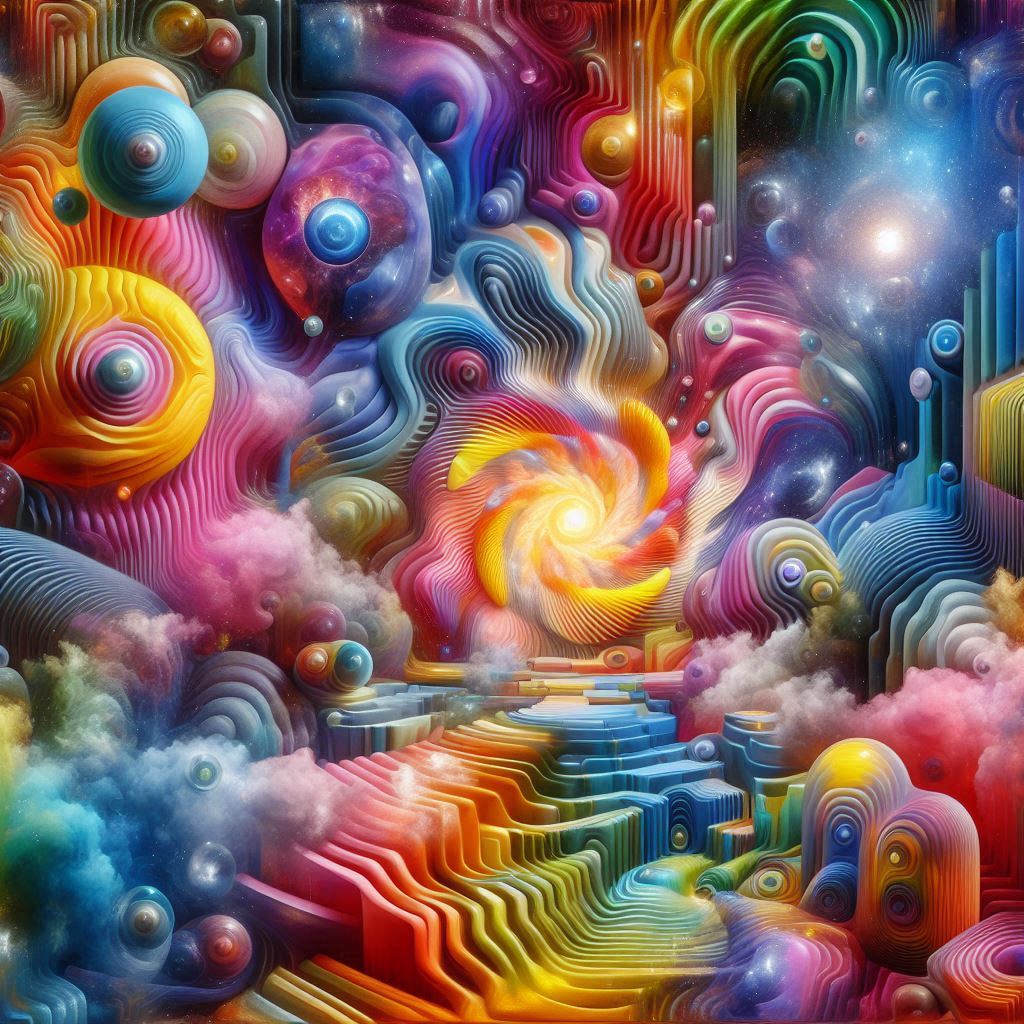Hallucination
Hallucination is the perception of something that seems real but does not actually exist. It can occur across any of the senses, including visual, auditory, olfactory (smell), gustatory (taste), and tactile (touch). Hallucinations are often associated with medical, psychological, or neurological conditions but can also occur in healthy individuals under certain circumstances, such as extreme stress, sleep deprivation, or drug use.
Types of Hallucinations:
- Auditory Hallucinations: Hearing sounds, voices, or music that are not present. This is common in conditions like schizophrenia.
- Visual Hallucinations: Seeing shapes, objects, or people that aren’t there. They can occur in delirium or certain neurological conditions.
- Olfactory Hallucinations: Smelling odors that aren’t present, such as a burning or rotten smell, which might occur in epilepsy or migraines.
- Gustatory Hallucinations: Experiencing tastes without a source, often unpleasant, associated with some psychiatric conditions.
- Tactile Hallucinations: Feeling sensations, like bugs crawling on the skin, which can happen in substance withdrawal or certain mental health conditions.
Causes of Hallucinations:
- Neurological Conditions: Epilepsy, Parkinson’s disease, and dementia can cause hallucinations.
- Mental Health Disorders: Schizophrenia, bipolar disorder, and severe depression are often associated with hallucinations.
- Substance Use: Drugs like LSD, methamphetamine, or alcohol withdrawal can induce hallucinations.
- Medical Conditions: High fever, dehydration, infections, or brain tumors can lead to hallucinations.
- Sensory Deprivation: Extended isolation or lack of sensory input may cause hallucinations.
Treatment:
Treatment depends on the underlying cause. Approaches may include:
- Medication: Antipsychotics, antidepressants, or other drugs to manage symptoms.
- Therapy: Cognitive-behavioral therapy (CBT) can help patients manage and understand their experiences.
- Addressing Underlying Conditions: Treating infections, managing neurological issues, or addressing substance use disorders.
If hallucinations occur, it’s essential to seek professional evaluation to determine the cause and appropriate treatment.
AI Hallucinations
In the context of artificial intelligence, “hallucination” refers to instances where an AI model generates outputs that are incorrect, nonsensical, or entirely fabricated, despite appearing plausible or confident. These hallucinations occur because of the inherent limitations in how AI systems are designed and trained.
Why AI Models Hallucinate:
- Pattern Recognition Without Understanding:
- AI models like GPT are trained to recognize and generate patterns in text, but they lack true understanding or awareness of facts.
- They generate outputs based on probabilities, predicting what comes next in a sequence of text without verifying its factual correctness.
- Incomplete or Ambiguous Training Data:
- If the training data contains errors, contradictions, or limited information about a topic, the model may produce inaccurate outputs.
- AI models generalize from the data they are trained on but may misinterpret rare or nuanced situations.
- Absence of Real-World Validation:
- AI models do not inherently verify the information they generate against real-world facts or external databases.
- They lack mechanisms to cross-check outputs for consistency or accuracy unless explicitly programmed to do so.
- Prompt Ambiguity:
- Vague or unclear user prompts can lead the AI to “fill in the gaps” with fabricated details to provide a complete-seeming answer.
- Overgeneralization:
- The AI might apply patterns or rules from one domain to another inappropriately, leading to unrealistic or fabricated outputs.
- Model Limitations:
- The model’s architecture and training process are optimized for generating fluent and contextually relevant text, not necessarily for factual accuracy.
- AI lacks access to current or external information unless explicitly connected to live databases.
- Optimizing for User Engagement:
- Models are often trained to prioritize providing responses that sound plausible or satisfying, which can sometimes result in confidently incorrect answers.
Reducing AI Hallucinations:
- Fine-Tuning:
- Models can be fine-tuned on domain-specific or curated data to improve their accuracy in particular contexts.
- Fact-Checking Mechanisms:
- Integrating AI systems with databases or APIs for real-time fact-checking can reduce errors.
- Models can use external search capabilities to validate information before generating responses.
- Improved Training Data:
- Training models on larger, more accurate datasets can help reduce hallucinations, but this approach is not foolproof.
- Feedback Loops:
- Allowing users to flag inaccuracies and using this feedback to retrain or update the model can improve performance over time.
- Transparency and Warnings:
- Clearly indicating that an AI’s response may not always be accurate helps manage user expectations and encourages cross-verification.
Summary:
AI hallucinations arise because these systems are designed to generate contextually coherent text based on patterns, not to “know” or “verify” facts. While techniques to reduce hallucinations are improving, the challenge persists because AI lacks intrinsic understanding or the ability to independently confirm the truth.


